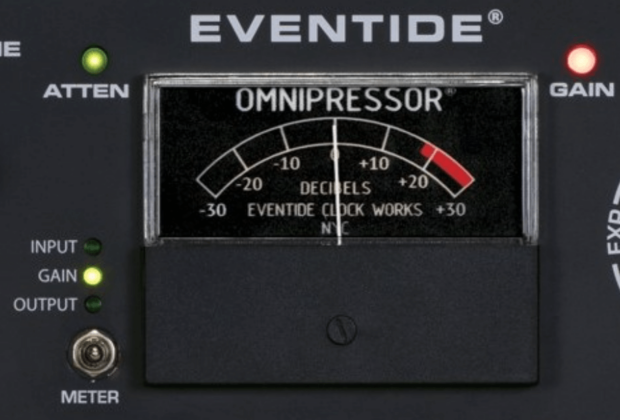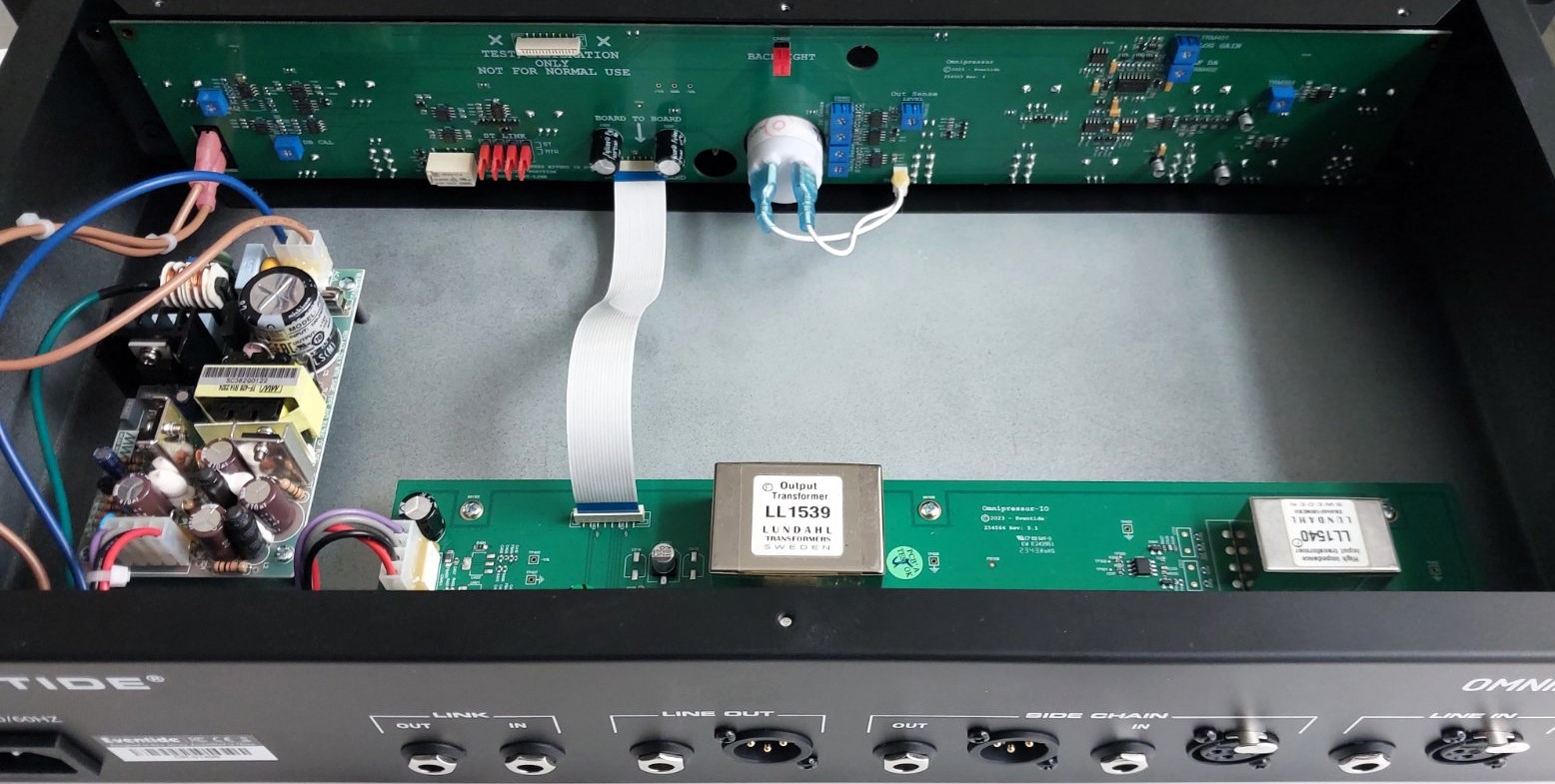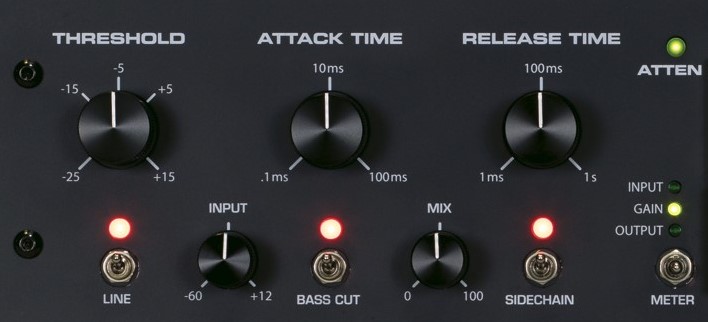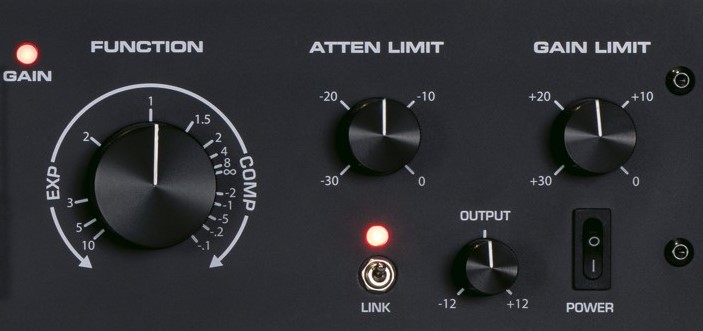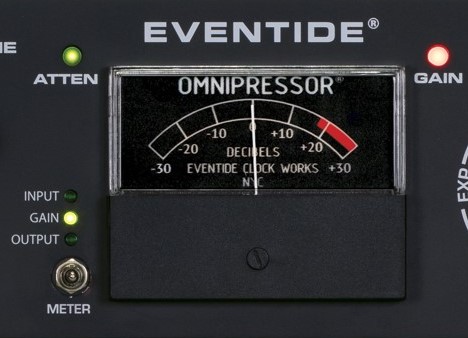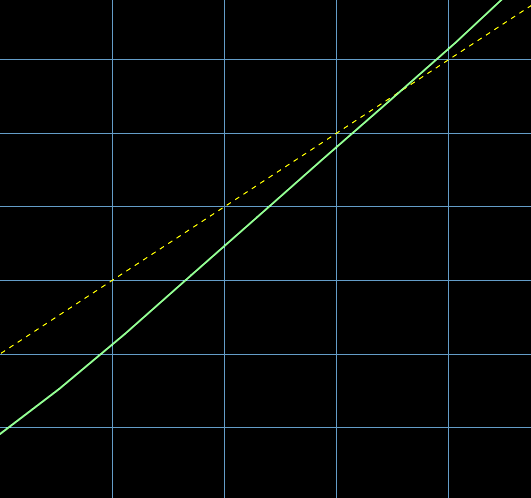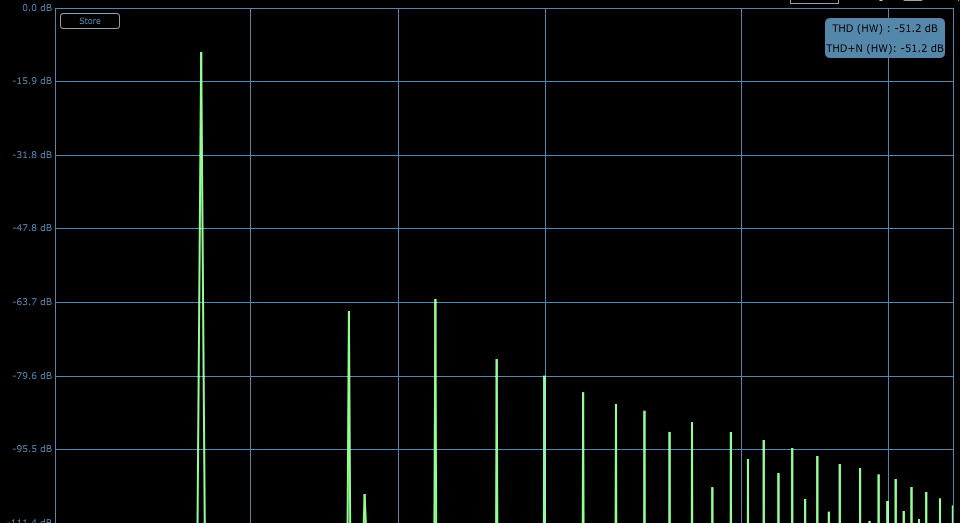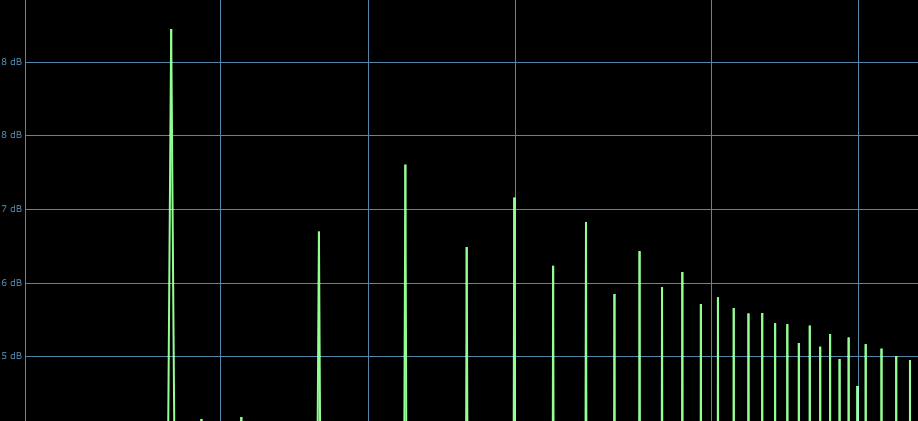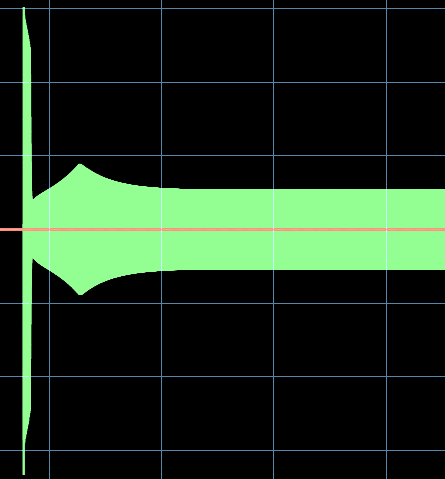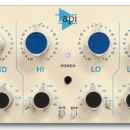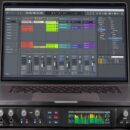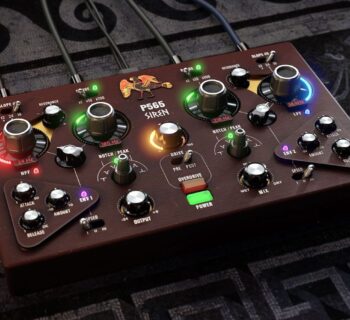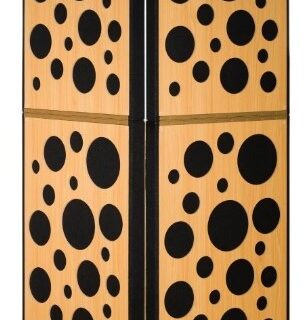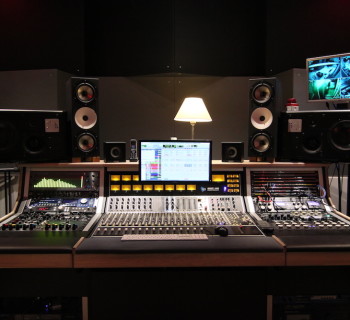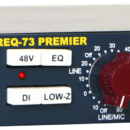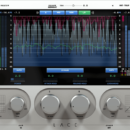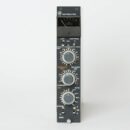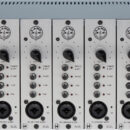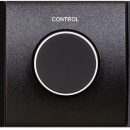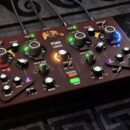Eventide reintroduces, after 50 years, the legendary Omnipressor 2830,
the most powerful dynamics processor ever, updating it to today's needs
with Mix control for parallel compression/expansion.
In 1972, Eventide is a small American company with very clear ideas. We are still in the years when compressors and limiters are mainly used in broadcast for signal control which have sneaked into recording studios, where some people are beginning to use them creatively and others see only their usefulness to avoid distortion on the tape. There is no mention of sidechain, because all compressors and limiters of the time work in closed-loop mode, meaning the incoming signal adjusts the gain reduction according to different techniques.
Richard Factor, of Eventide, begins to think about separating the circuit that changes the gain (a VCA) from the one related to the control signal (sidechain). Omnipressor will anticipate by years the concept of separate and elaborate sidechain for control, in an open loop circuit.
In 1972 the first Omnipressor prototype appears based on DBX's RMS level detector and compander (compression and expander) modules used for noise reduction on magnetic tape. Within a short time, a chip with four logarithmic amplifiers, each 30 dB, also becomes available and will be used as a level detector.

The first Eventide Omnipressor already included Attenuation and Gain Limit controls, but not attack and release times
Thus was born the first Omnipressor Model 2826:it would be improved in 1974 by the Model 2830, which introduced a number of controls to make programming and calibration easier. Right on the aura of the 2830 is born the modern AU version, which retains the same features and adds more.Here we just want to point out one detail: from its inception, having an open loop circuit that separated the sidechain from the signal from the processor, Omnipressor already had a 200 Hz HPF filter on the sidechain, so that bass drum and bass (or whatever) were excluded from the compressor. It was 1972!
From vintage to special edition
Credit must be given to Eventide for being consistent with the original design, which included only a few custom parts such as the meter, gain
reduction module, transformers, and panel switches. For example, instead of the older Motorola MLM301 op-amps we find the newer LM301s, which are derived from that design. The former MC1496 modulator/demodulator appears to have been replaced by a TI TL441, a four-stage logarithmic amplifier, each 30 dB, slaved by several TI 4580 op-amps. The old VCA DBX is now a THAT 2180 that was born on the experience of the earlier VCA DBXs. The two custom Eventide transformers are now replaced by the excellent Lundhall LL1539 for the output, with a saturation level of +24 dBu at 20 Hz, and Lundhall LL1540 for the input with 0.1 percent distortion at 50 Hz at +20 dBu. The audio connections are made with Neutrik components, and all construction is in SMD, on two boards: the first is dedicated only to the audio connections and houses the two transformers, the second is behind the control panel and also includes all the trimmers for calibration, which takes advantage of a multi-pin connector dedicated exclusively to testing and calibration.
On the PCB behind the rear panel we find no less than nine trims for calibration, as well as four jumpers to establish the rules from connecting with other Omnipressor units regarding sidechain signal to stereo or Master. The power supply is a Mean Well switching power
supply, already noted in other high-class outboards. Rear connections provide Line Out and Line In on XLR and unbalanced ¼' jack, and Link In/Out for sidechain.
The design is a constructive and technological upgrade from the original, whose operating philosophy is mantained. Omnipressor is assembled and built in China: the quality of the components is excellent, as is the cleanliness of the circuit. There is little to say: already several manufacturers (including SSL) produce in China with excellent quality results. We prefer it that way. In the past,
outsourcing the construction of some outboards to high-cost Europe was not so good quality.
The controls
The controls are identical to the original: on the left the threshold (-25/+15), the attack time (0.1 microseconds up to 100 milliseconds), the release time (1 millisecond to 1 second), the switches for hardware bypass (Line), used to insert the HPF filter on the sidechain (Bass Cut), and the three-position switch used to choose the meter between Input, Gain and Output.
A potentiometer for input level from -60 to +12 and Mix potentiometer for parallel compression have also been included in the new version. The VU meter, backlit, is identical to the original in graphics. On the right we find the Function control to continuously choose the operating mode with relative ratios, between Expansion, Compression and negative compression, followed by the Atten Limit (-30/0) and Gain Limit (+30/0) controls. The calibration and power buttons have been eliminated, replaced here by a Link switch to connect multiple Omnipressors in cascade, the power button, and the Output control (-12/+12).
The Input and Output controls on the panel are very useful for increasing the signal level for the transformers, so as to squeeze out that much sought-after harmonic distortion. The maximum input level is + 20 dB (dependent on the impedance the transformer sees), beyond which
Omnipressor goes into clipping (we already see the distortion-thirsty looks) with nominal level from 0 to + 8dB. The maximum output level is +18 dB, and this is where the Output control steps in to compensate for compression. The Input Level control, on the other hand, acts on both the absolute level of the sidechain and the signal from the processor, thus changing the threshold and dynamics behavior.
Operability
Apparently, Omnipressor is a compressor, with ratios from 1 to infinity (limiter if the attack time is at its lowest) and then shifting to negative ratios up to -2:1 from -0.1:1 and an expander up to 10:1 (gate).
The two controls Atten and Gain Limit turn all the tables. As long as they are at their minimum level (-30 or +30), Omnipressor behaves like a predictable dynamics processor, but as soon as you use Atten Limit, for the compressor, and Gain Limit, for the expander, things change
dramatically. By combining these controls, with the negative compression possibilities, you can enhance any portion of a sound's envelope, ranging from cutting transients to enhancing them, without ever overdoing it. The two peak LEDs Atten and Gain, alongside the meter,
allow you to keep under control on how the dynamics processor is working. There are times, for example, when the LEDs light up but the meter is still stopped.
For those familiar with broadcasting, the two controls are perfect for letting Omnipressor work without surprises: you set the gain limit for
the expansion and the limit for the compressor, beyond which the processor cannot go. The trick, to establish the values analytically, is to use the threshold at minimum (-25), with no input signal, set the meter to Gain, move to the maximum for Expansion and establish with Gain
Limit the amount of maximum gain for the expander at the desired value (0 to +30 on the Gain Meter). The same can be done with the compressor, moving Function to -0.1 and acting on Atten Limit to define the amount of maximum compression (-30 dB to 0 db). This is how a broadcast engineer would reason.
The studio sound engineer will follow his ears to determine what he wants to do. Unlike classic compressors and expanders, setting a threshold gain limit also amounts to defining the crest factor, which can be further managed with the Mix control in parallel compression. Omnipressor works with an RMS level detector but there is one occasion when it becomes a Peak detector, and that is when Attack Time is set to 0.1 microsecond. For the more experimentalists, there is also the option of using the Link In input as a logarithmic control voltage for the dynamic processor, with a dynamic range of 60 dB and a range of +12 to -12 volts DC. To achieve this function, the four internal jumpers must be changed by moving them to MTR Link. In this mode only the Input, Mix and Outputcontrols will work in addition to the meter. The control voltage, however, will not produce ring modulator type effects but will still be useful for those who want to experiment with amplitude modulation because the signal is logarithmic and unipolar, useful information for those coming from the world of modular synths.
Under pressure!
And here it is finally in the studio! We had never bought it before because we knew there might be problems with some replacement parts:
particularly the transformers, the meter, and the DBX module, which itself is encased in an enclosed box. Although we have used and loved
it, we have been hoping until today for a reissue: the 2830AU is a godsend! On paper, Omnipressor would seem to be a very flexible dynamics processor, but for those unfamiliar with it, as soon as you start working with it, doubt upon doubt arises because the results are strange to say the least. You work in compression and expansion appears below a certain threshold, and vice versa. The first moments are difficult because a fundamental fact is missing that is hidden, and we dare say not well explained, in the pages of the manual. Omnipressor always works simultaneously as compressor and expander. The point at which it works as compressor is above 0 dB on the Gain meter (not in the input or output level), while it switches to expander below 0 dB. It is obvious that the most important setting is the input level, which can be changed with Input, which in turn makes it necessary to change the threshold according to the balance you want to achieve between compression and expansion. The threshold is critical: above the value Omnipressor acts as compression according to the ratio you choose. In practice, there is no real Omnipressor mode, because the Function pot simply shifts the balance between expansion and compression, and relative ratio of input to output, always keeping the 0 dB point of the Gain meter as the actual threshold. It is therefore understandable why even using extreme negative compression, Omnipressor still works as an expander below the set threshold. This is where the two controls of Atten and Gain Limit come into play.
For example, if Omnipressor compresses little because the threshold is high, we will have more expansion that may increase the output level of the part below the threshold too much. To avoid these gain explosions, we need to act on Gain Limit, which will limit the amount of gain that will be added to the decreasing signal to a maximum of +30 dB, but this can be added to the level of the input signal. Similarly is the case
with Atten Limit, which will control the limit of compression gain reduction. Both controls have a range of 30 dB, which is by no means small. The rule to remember is that Attenuation Limit is related to gain reduction, while Gain Limit is related to expansion. The two terms cause confusion, because one is led to think that Attenuation is related to the expander/gate, while Gain seems more related to the compressor. It is exactly the opposite! Result to this rule: if you want to use Omnipressor as a pure compressor, you must reset the expander action by bringing the Gain Limit to zero. Conversely, to use only the expander, without compression, you will bring Attenuation Limit to zero. There are a few tricks that can make programming easier: the first is to operate with Mix all to the right, so that you hear only the Omnipressor effect to be added to the original signal. It is always, interesting, for example, to see how the attack and release settings, the latter to be synchronized to the tempo of the song, are easier to recognize with the expander. Once you find the correct release time, for example, you switch to the compressor, and all you have to do is decide threshold and compression ratio to get perfect compression. In addition, you can limit the compression with Atten Limit: usually 10 dB is more than enough to not distort the track. Often even less to create dynamic movement.
You discover very quickly that Omnipressor is not only a transparent compressor on the VCA but the sound of transformers, a bit dark, but it
is a unique and inimitable dynamic effects processor. Its specialty is giving rhythm and dynamics to pieces, either with the compressor or the expander. In just a few moments any flat track becomes powerful, interesting, dynamic and above all alive. You can apply it anywhere all the time with great satisfaction: it is not difficult to find the hotspot, which is often a few millimeters ahead or behind an initial parameter setting. You keep everything under control thanks to the two Limit potentiometers, which are a godsend. Plug-in replication comes close, but the hardware is irreproducible because the interplay between transformer distortion, distortion introduced by VCA and timing is impossible to reproduce. It is an analog outboard of a unique breed and can change the fate of a dull audio track or an overly digital mix. The beauty is that once you add the resulting effect to the mix, there is no way to tell that an Omnipressor has intervened and there is no other way to reproduce the effect.
It is only after you fully understand it that you begin to appreciate some of the choices, such as the Output control that works only with
Omnipressor active, which, together with the hardware bypass, makes for a good A/B comparison.
The HPF filter on the sidechain now becomes an option to exaggerate the dynamic effect following the kick drum and bass guitar, rather than avoiding the compressor trigger, because when combining the original signal with the processed one you can choose, for example, whether to use Omnipressor to give an enhancement on the mid and high frequencies (with Bass Cut engaged) or to be more linear.
The Mix control is a revolution for Omnipressor, which 50 years later is that dynamics processor to be used almost always in parallel. The control allows you to always find the exact point along with the threshold. And the more Omnipressor works, the more at distortion increases. You can hear it clearly when you overdrive the two 30-dB amplifiers, for expander and compression. Too overdone? Here come the two Limit controls to help.
Omnipressor works well as a limiter but not as a clipper: it can easily clip, setting exaggerated compression ratios coming to the end of the two dedicated amps, but it doesn't have the gifts of a clipper.
The timing is so fast, when idling, that it introduces very obvious harmonic distortion or shatters the transient.
The two transformers behave as such: more harmonic distortion around 40 Hz than at higher frequencies. And the degree of harmonic distortion is not low when you enter high in the input.
We wouldn't use Omnipressor as a pure bus compressor, because it's simply not its job, it doesn't sound right, it doesn't glue tracks together well, and with two units it's impossible to have the exact same parameters set, but in parallel it's as good as it gets for handling dynamics and getting out of the hypercompressed logic. It takes just a few steps, in dance, EDM and hip hop to pull energy out of any track and blast the beat! The transparency of VCA is such that it often compresses and you don't realize it is working unless you have trained ears. The hardware is very quiet! Finding the hot spot in negative compression is not difficult, but it requires constant adjustments between the Input level, the threshold, which should capture only transients and not the whole signal, the release times to synchronize to the tempo of the song, and the gain limit so as not to overdo it and keep everything under control. There are a couple of applications not obvious, and all to be explored, with two Omnipressors to be put in series or in parallel: in the first case two different thresholds can be used to act more on different parts of the track or mix. In the second, on the other hand, the two Omnipressors inserted in a Mid Side matrix can make such particular changes that the whole unedited track becomes very personal.
All good then? A couple of details would have made it even more palatable: in addition to jerky potentiometers for recall on two units in stereo, we would have loved the possibility of installing different transformers and a more effective metering system. However, we would have come out of the 50-year-old replica. The price is a bit high considering the made in China, which has allowed many manufacturers to
drop in price without compromising build quality and sound.
Conclusions
We had loved Omnipressor in the past, which, due to the limitations ofthe time, required good routing to be effectively included in mixes or
for tracks. One could just manage the entire dynamics of the track, boosting the RMS by the operation of expander and compressor, never
separate, as in broadcast.
In the modern mix, Omnipressor is a very powerful weapon in the hands of the sound engineer and producer to control the crest factor, the dynamics of the track related to the BPM value of the track, to search for a portion of the sound to be processed differently or to print on the dynamics the rhythm of the track. There is no limit to the imagination, as long as you understand that it is not to be used as a classic compressor, although it can be done with a couple of tricks using the two Limit controls.
Fifty years later, Richard Factor's idea and Eventide's development are still unsurpassed in power, flexibility and sound.
The control over the dynamics processor is almost total and opens up the development of innovative techniques even in the way we work today, especially where rhythm is everything, see EDM, dance, and any style that does not have an overcrowded mix. In the mix it is the secret weapon for painting all the dynamic nuances you want, not to mention the potential for experimentation with the Link input for sound control voltage. Everything that has been dynamic processor to date, be it a compressor, limiter, expander and gate, appears years old compared to an Omnipressor. We do not know if this 2830Au is a limited edition or not, but it is worth pre-order it as soon as possible so as not to let it slip away. Also worth noting is the educational aspect: with Omnipressor youcan learn all the tricks of expander, gate, compressor and limiter, combining them together. A different dynamics processor will no longer have any secrets.
Eventide wrote that Omnipressor loves those who use it: read the manual, start following a novel programming philosophy and experiment. You will fall in love after a few hours and it will be a bond forever. It takes head and patience, but what an Omnipressor will give you back is a new dynamic universe previously impossible to achieve. Finally something new, even if it is 50 years old.
How far ahead were the Eventide people in 1972?
Very good:
- Complete control of the dynamic process
- Unique dynamic effects
- Simultaneous compression and expansion
- Input and output transformers
- Limiter
- Very flexible
- Silent
- Mix for parallel compression
- Same upgraded components as original model
Not so good:
- No stepped potentiometers
- Transformers not replaceable
- Complicated to use if you don't change your approach
Info
Eventide
Mogar Music


